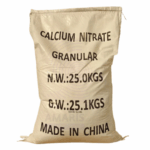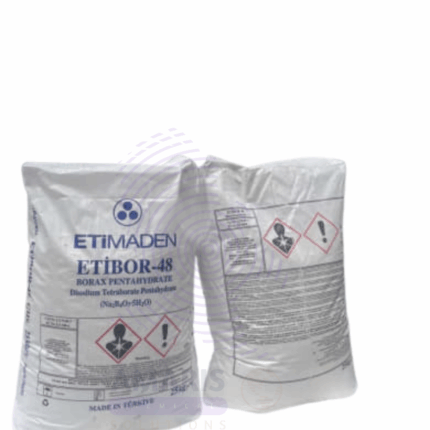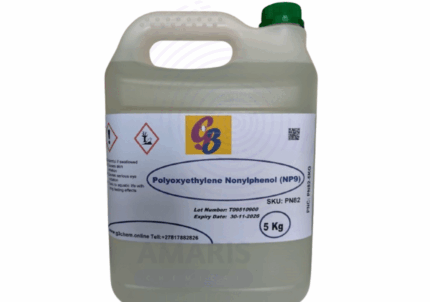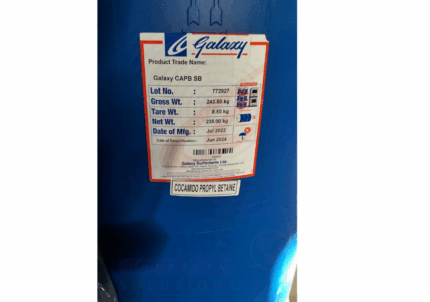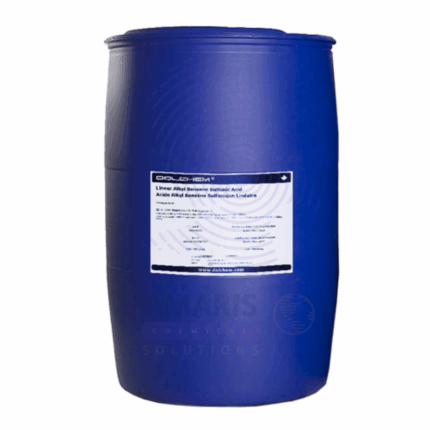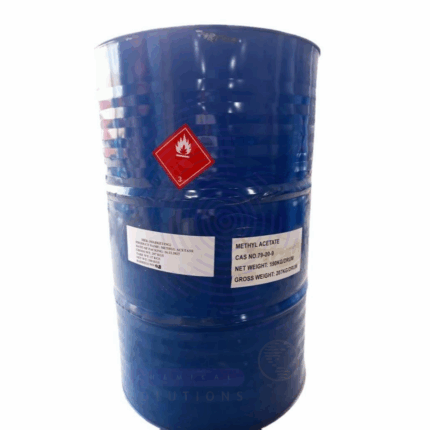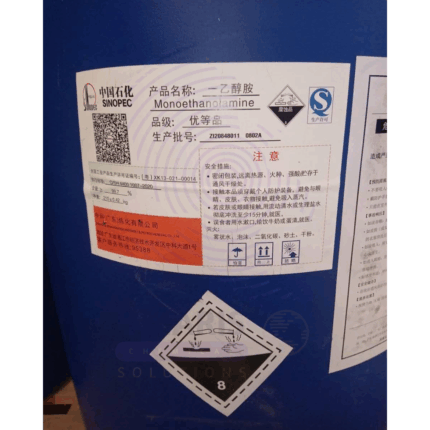Marlophen NP9
Whatsapp Order
Marlophen NP9 is a nonionic surfactant based on alkylphenol ethoxylates, widely used as a wetting agent, emulsifier, and detergent in various industrial and agricultural applications. It offers excellent compatibility with a range of chemicals and demonstrates strong emulsifying and dispersing properties. Marlophen NP9 enhances the performance of formulations such as pesticides, cleaning agents, and textile auxiliaries by improving spreading, penetration, and stability. It is valued for its ability to reduce surface tension and increase solubility of active ingredients in aqueous systems.
Description
Table of Contents
Toggle
Marlophen NP9
Primary Uses
- Agricultural Formulations
- Used as a wetting agent and emulsifier in herbicides, insecticides, and fungicides to improve spray coverage and adhesion on plant surfaces.
- Industrial Cleaning Products
- Employed in detergents and cleaning formulations for effective removal of oils, greases, and soils.
- Textile Industry
- Functions as a wetting and emulsifying agent in textile processing and dyeing operations.
Secondary Uses
- Paints and Coatings
- Acts as a dispersing agent in paint formulations to ensure uniform pigment distribution.
- Personal Care Products
- Used in some formulations as an emulsifier or solubilizer in low concentrations.
KEY PRODUCT FEATURES
1. Basic Identification Attributes
- Chemical Name (IUPAC): Alkylphenol Ethoxylate (Nonylphenol Ethoxylate, average 9 moles EO)
- Common/Trade Name: Marlophen NP9
- CAS Number: 9016-45-9 (Nonylphenol ethoxylate)
- HS Code: 3402.13.00 (Non-ionic organic surface-active agents)
- Synonyms: Nonylphenol Ethoxylate NP9; Nonylphenol polyethylene glycol ether; NP9
2. Physical & Chemical Properties
- Physical State: Liquid
- Color & Odor: Pale yellow to amber; mild characteristic odor
- pH (1% solution): 6.5 – 8.5
- Solubility: Miscible with water and many organic solvents
- Viscosity: Moderate
- Density: Approx. 1.04 g/cm³ at 25°C
- Appearance: Clear to slightly hazy liquid
3. Safety & Hazard Attributes
- GHS Classification:
- May cause skin and eye irritation
- Harmful to aquatic life with long-lasting effects
- Toxicity:
- Moderate toxicity; avoid prolonged exposure
- Exposure Limits:
- No specific limits; use standard industrial hygiene practices
4. Storage & Handling Attributes
- Storage Conditions:
- Store in cool, dry, well-ventilated area away from heat and direct sunlight
- Container Type:
- Supplied in plastic drums or bulk containers suitable for liquid chemicals
- Handling Precautions:
- Use gloves and eye protection; avoid inhalation and skin contact
5. Regulatory & Compliance Attributes
- Complies with industrial chemical safety standards
- Subject to environmental regulations regarding aquatic toxicity
6. Environmental & Health Impact
- Biodegradability: Slowly biodegradable under aerobic conditions
- Ecotoxicity: Toxic to aquatic organisms; avoid release into waterways
- Bioaccumulation: Potential to bioaccumulate in aquatic species
- Carcinogenicity/Mutagenicity: Not classified as carcinogenic
SAFETY HANDLING PRECAUTIONS
Safety Handling Precautions
- PPE Required:
- Chemical-resistant gloves, goggles, and protective clothing
- Handling Guidelines:
- Use in well-ventilated areas
- Avoid skin and eye contact, inhalation of vapors
- Storage Measures:
- Keep containers tightly closed when not in use
First Aid Measures
- Inhalation: Move to fresh air; seek medical attention if symptoms develop
- Skin Contact: Wash thoroughly with soap and water; seek medical help if irritation persists
- Eye Contact: Rinse with plenty of water for 15 minutes; consult a doctor if irritation continues
- Ingestion: Do not induce vomiting; rinse mouth and seek medical attention immediately
Firefighting Measures
- Fire Hazards: Combustible liquid; vapors may form explosive mixtures with air
- Extinguishing Media: Use foam, dry chemical, or carbon dioxide extinguishers
- Special Precautions: Wear full protective gear and self-contained breathing apparatus if necessary
- Hazardous Combustion Products: Carbon monoxide, carbon dioxide, and irritating fumes
Related products
Borax Pentahydrate
Borax Pentahydrate (sodium tetraborate pentahydrate) is an inorganic compound and a hydrated form of borax. It typically appears as colorless to white crystalline granules or powder. This compound contains five molecules of water of crystallization per formula unit, distinguishing it from other borax hydrates such as the decahydrate form. Borax Pentahydrate is widely used across industries including detergents, glass production, agriculture, and cosmetics, valued for its buffering capacity, emulsification, and antiseptic properties. It is soluble in water and exhibits alkaline properties in aqueous solution.
Emulsifier ( Emulgator) NP-9
Emulsifier ( Emulgator) NP-9 is a nonionic surfactant belonging to the family of Nonylphenol Ethoxylates (NPEs), specifically with an average of 9 ethylene oxide (EO) units. It is widely used as an effective emulsifying, wetting, dispersing, and solubilizing agent. NP-9 is typically a pale yellow to amber viscous liquid, soluble in water and various organic solvents. It is valued for its strong emulsifying ability to stabilize oil-in-water (O/W) and water-in-oil (W/O) emulsions, excellent detergency, and good compatibility with other surfactants and formulation ingredients. NP-9 is commonly employed in industrial, agricultural, cosmetic, pharmaceutical, and cleaning applications.
Galaxy CAPB
Galaxy CAPB is a high-performance amphoteric surfactant based on Cocamidopropyl Betaine, produced from coconut fatty acids. It appears as a translucent to pale yellow liquid with mild viscosity and a mild coconut-like odor. As a zwitterionic surfactant, it provides exceptional foaming, mildness, and synergistic compatibility with other surfactants, making it ideal for personal care, household, and industrial formulations.
Hypro 88
Hypro is a high-quality, non-ionic, water-soluble cellulose ether used primarily as a thickening, suspending, and stabilizing agent. It is derived from cellulose and chemically modified to achieve excellent water retention, rheological control, and film-forming properties. Hypro 88 is widely valued in industries such as construction, paints and coatings, adhesives, pharmaceuticals, and personal care for its ability to enhance texture, improve workability, and stabilize formulations.
Labsa
Labsa Ufacid, also known as Ufacid 90%, is a highly concentrated anionic surfactant widely used in the detergent and cleaning industries. It is a viscous, oily liquid or semi-solid with strong acidic properties and excellent surface-active capabilities. Labsa 90% acts as a primary raw material for manufacturing laundry detergents, dishwashing liquids, and industrial cleaners due to its excellent foaming, wetting, and emulsifying properties. It is valued for its strong cleaning power and compatibility with various formulations.
Methyl Acetate
Methyl Acetate is a colorless, volatile, and flammable liquid with a pleasant, fruity odor. It is an ester formed from methanol and acetic acid and is widely used as a solvent in coatings, adhesives, inks, and cleaning products. Known for its excellent solvency power and fast evaporation rate, methyl acetate is preferred in industrial and commercial applications where quick drying is essential.
Mono Ethanol Amine
Mono Ethanol Amine (MEA) is a clear, colorless, hygroscopic liquid with an ammonia-like odor. It is an organic chemical compound combining both amine and alcohol functional groups. MEA is widely used as a versatile chemical intermediate and is especially important in gas treatment, detergents, and chemical manufacturing due to its alkalinity and solubility in water and organic solvents.
Sodium Xylene Sulphonate
Sodium Xylene Sulphonate (SXS) is a white to off-white crystalline powder or granule with the chemical formula C₈H₇NaO₃S. It is a highly water-soluble anionic surfactant commonly used as a hydrotrope to enhance the solubility and stability of other surfactants and ingredients in detergent and cleaning formulations. Packaged in 25kg bags, SXS improves the clarity of liquid detergents and personal care products while boosting performance in hard water and various industrial applications.


 Preservatives(food)
Preservatives(food) Flavor Enhancers
Flavor Enhancers Acidulants
Acidulants Sweeteners
Sweeteners Antioxidants
Antioxidants Colorants(food)
Colorants(food) Nutraceutical Ingredients (food)
Nutraceutical Ingredients (food) Nutrient Supplements
Nutrient Supplements Emulsifiers
Emulsifiers
 Collectors
Collectors Dust Suppressants
Dust Suppressants Explosives and Blasting Agents
Explosives and Blasting Agents Flocculants and Coagulants
Flocculants and Coagulants Frothers
Frothers Leaching Agents
Leaching Agents pH Modifiers
pH Modifiers Precious Metal Extraction Agents
Precious Metal Extraction Agents
 Antioxidants(plastic)
Antioxidants(plastic) Colorants (Pigments, Dyes)
Colorants (Pigments, Dyes) Fillers and Reinforcements
Fillers and Reinforcements Flame Retardants
Flame Retardants Monomers
Monomers Plasticizers
Plasticizers Polymerization Initiators
Polymerization Initiators Stabilizers (UV, Heat)
Stabilizers (UV, Heat)
 Antifoaming Agents
Antifoaming Agents Chelating Agents
Chelating Agents Coagulants and Flocculants
Coagulants and Flocculants Corrosion Inhibitors
Corrosion Inhibitors Disinfectants and Biocides
Disinfectants and Biocides Oxidizing Agents
Oxidizing Agents pH Adjusters
pH Adjusters Scale Inhibitors( water)
Scale Inhibitors( water)
 Antioxidants(cosmetic)
Antioxidants(cosmetic) Emollients
Emollients Fragrances and Essential Oils
Fragrances and Essential Oils Humectants
Humectants Preservatives
Preservatives Surfactants(cosmetic)
Surfactants(cosmetic) Thickeners
Thickeners UV Filters
UV Filters
 Fertilizers
Fertilizers Soil Conditioners
Soil Conditioners Plant Growth Regulators
Plant Growth Regulators Animal Feed Additives
Animal Feed Additives Biostimulants
Biostimulants Pesticides (Herbicides, Insecticides, Fungicides)
Pesticides (Herbicides, Insecticides, Fungicides)
 Active Pharmaceutical Ingredients (APIs)
Active Pharmaceutical Ingredients (APIs) Excipients
Excipients Solvents(pharmaceutical)
Solvents(pharmaceutical) Antibiotics
Antibiotics Antiseptics and Disinfectants
Antiseptics and Disinfectants Vaccine Adjuvants
Vaccine Adjuvants Nutraceutical Ingredients (pharmaceutical)
Nutraceutical Ingredients (pharmaceutical) Analgesics & Antipyretics
Analgesics & Antipyretics
 Analytical Reagents
Analytical Reagents Solvents(lab)
Solvents(lab) Chromatography Chemicals
Chromatography Chemicals Spectroscopy Reagents
Spectroscopy Reagents microbiology-and-cell-culture-reagents
microbiology-and-cell-culture-reagents Molecular Biology Reagents
Molecular Biology Reagents Biochemical Reagents
Biochemical Reagents Inorganic and Organic Standards
Inorganic and Organic Standards Laboratory Safety Chemicals
Laboratory Safety Chemicals Specialty Laboratory Chemicals(Special Laboratory Equipment)
Specialty Laboratory Chemicals(Special Laboratory Equipment)
 Demulsifiers
Demulsifiers Hydraulic Fracturing Fluids
Hydraulic Fracturing Fluids Scale Inhibitors(oil)
Scale Inhibitors(oil) Surfactants(oil)
Surfactants(oil) Drilling Fluids
Drilling Fluids
 Dyes and Pigments
Dyes and Pigments Bleaching Agents
Bleaching Agents Softening Agents
Softening Agents Finishing Agents
Finishing Agents Antistatic Agents
Antistatic Agents
 Admixtures
Admixtures Waterproofing Agents
Waterproofing Agents Sealants and Adhesives
Sealants and Adhesives Curing Compounds
Curing Compounds Concrete Repair Chemicals
Concrete Repair Chemicals Anti-Corrosion Coatings
Anti-Corrosion Coatings
 Surfactants(cleaning)
Surfactants(cleaning) Builders
Builders Enzymes
Enzymes Solvents (Cleaning)
Solvents (Cleaning) Fragrances
Fragrances
 Electronic Chemicals
Electronic Chemicals Catalysts
Catalysts Lubricants
Lubricants Photographic Chemicals
Photographic Chemicals Refrigerants
Refrigerants Automotive chemicals
Automotive chemicals Pyrotechnic Chemicals
Pyrotechnic Chemicals
 Biodegradable Surfactants
Biodegradable Surfactants Bio-based Solvents
Bio-based Solvents Renewable Polymers
Renewable Polymers Carbon Capture Chemicals
Carbon Capture Chemicals Wastewater Treatment Chemicals
Wastewater Treatment Chemicals
 Pigments
Pigments Solvents(paint)
Solvents(paint) Specialty Coatings
Specialty Coatings Binders/Resins
Binders/Resins Additives
Additives Driers
Driers Anti-Corrosion Agents
Anti-Corrosion Agents Functional Coatings
Functional Coatings Application-Specific Coatings
Application-Specific Coatings
 Fresh Herbs
Fresh Herbs Ground Spices
Ground Spices Whole Spices
Whole Spices Spice Blends
Spice Blends Dried Herbs
Dried Herbs
 Leavening Agents
Leavening Agents Dough Conditioners
Dough Conditioners Flour Treatments
Flour Treatments Fat Replacers
Fat Replacers Decoratives
Decoratives Preservatives(baking)
Preservatives(baking)
 Plasticizers & Softeners
Plasticizers & Softeners Reinforcing Agents
Reinforcing Agents Adhesion Promoters
Adhesion Promoters Vulcanizing Agents
Vulcanizing Agents Antidegradants
Antidegradants Blowing Agents
Blowing Agents Fillers & Extenders
Fillers & Extenders Accelerators & Retarders
Accelerators & Retarders
